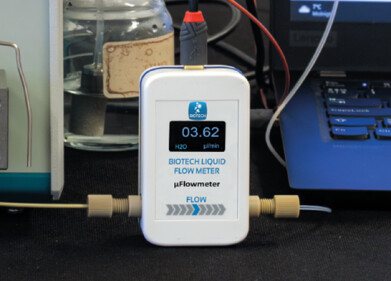HPLC, UHPLC
HPLC vs UPLC - What's the Difference?
Dec 17 2021
High-performance liquid chromatography (HPLC) and ultra-performance liquid chromatography (UPLC) are both commonly used techniques when it comes to separating components.
Given their common purpose, it can be hard for some people to differentiate between the two. This post will clear things up by defining HPLC and UPLC before outlining the difference between them.
HPLC vs UPLC – Similarities
It’s easy to see why people mix up HPLC and UPLC. Broadly speaking, both methods are used to separate components found within a mixture. They’re both types of liquid chromatography, meaning a liquid solvent is used in the mobile phase.
Additionally, HPLC and UPLC can both be used for identification and quantitation. In other words, the results from them can be used to calculate quantities of the components as well as separating and identifying them. All in all, the two methods share similar levels of accuracy and precision too.
HPLC vs UPLC – Differences
Despite these similarities, there are a number of key differences:
Pressure
One of the clearest differences between HPLC and UPLC is the pressure they can handle. Previously known as high-pressure liquid chromatography, you might think that HPLC is the superior option. However, while HPLC systems can handle up to 6,000psi, UPLC can handle up to 15,000psi.
Particle sizes
As well as handling higher pressure levels, UPLC has higher sensitivity. That means it allows for lower particle sizes within columns, making it suitable for low-component analysis.
Applications
Because of its higher sensitivity, UPLC can be used for more complicated samples, which may have lower quantities of various components. Some examples include dietary supplements and biological samples. On the other hand, HPLC is used for simpler applications like water purification and the detection of impurities in pharmaceuticals.
Popularity
Developed in 1967, HPLC was one of the most popular techniques for analytical laboratories from the 1980s to the early 2000s. When UPLC systems were introduced in the mid-2000s, they offered better flow rates and resolution with faster analysis speeds. As a result, UPLC is fast becoming the most popular system.
The verdict
While HPLC and UPLC share a broad purpose, the latter is a more recent development which offers a number of benefits over its predecessor. As a result, it’s becoming the more popular option, which can be used for a wider variety of applications, including more complicated mixtures. All that said, HPLC is still a reliable and commonly used technique in industry like pharmaceuticals.
If you’d like to read more about UPLC and its use in overcoming sample complexity, check out the article, ‘The Evolution of Data Independent Analysis: Complex Sample Analysis Using UPLC Ion Mobility Mass Spectrometry’.
Digital Edition
Chromatography Today - Buyers' Guide 2022
October 2023
In This Edition Modern & Practical Applications - Accelerating ADC Development with Mass Spectrometry - Implementing High-Resolution Ion Mobility into Peptide Mapping Workflows Chromatogr...
View all digital editions
Events
ACS National Meeting - Fall 2024
Aug 18 2024 Denver, CO, USA
Sep 04 2024 Chiba, Tokyo, Japan
Sep 04 2024 University of Warwick, Coventry, UK
Sep 10 2024 Rockville, MD, USA
Plastics Recycling World Expo Europe
Sep 11 2024 Brussels, Belgium














